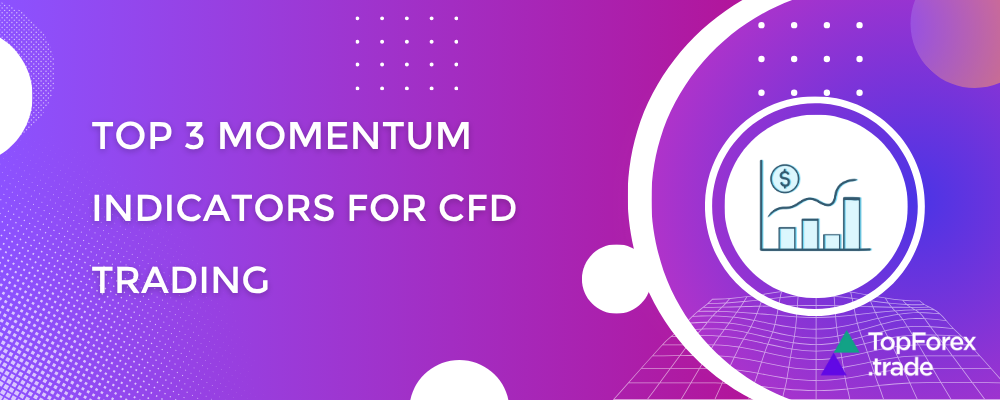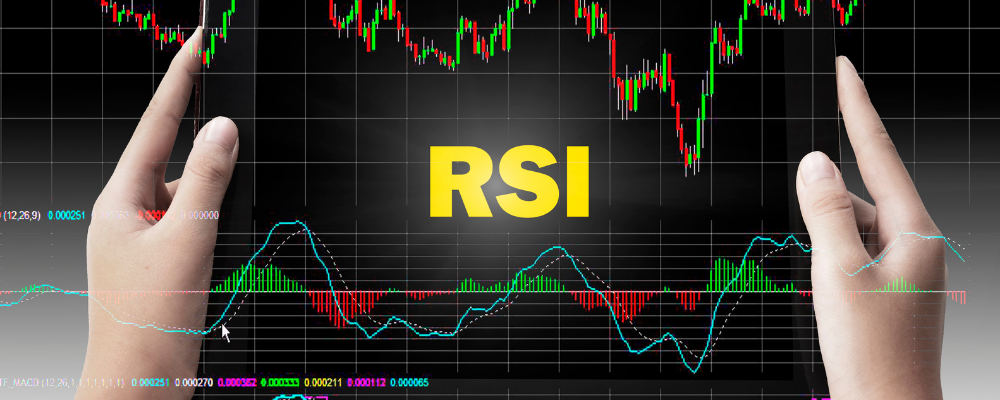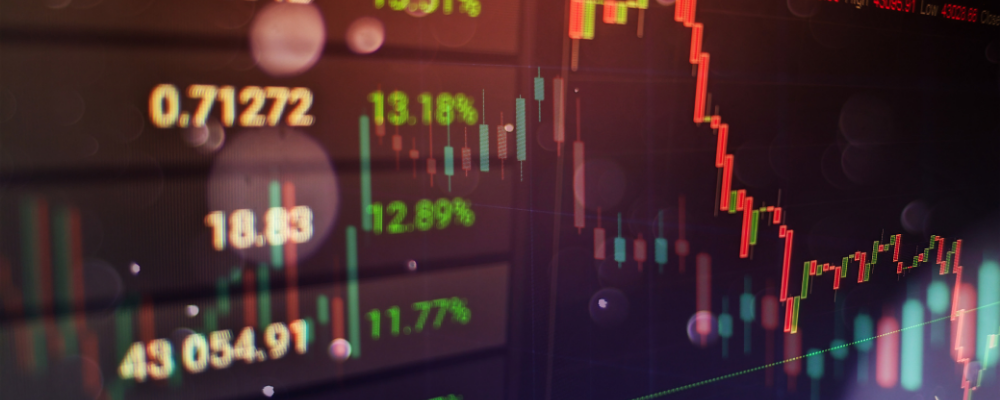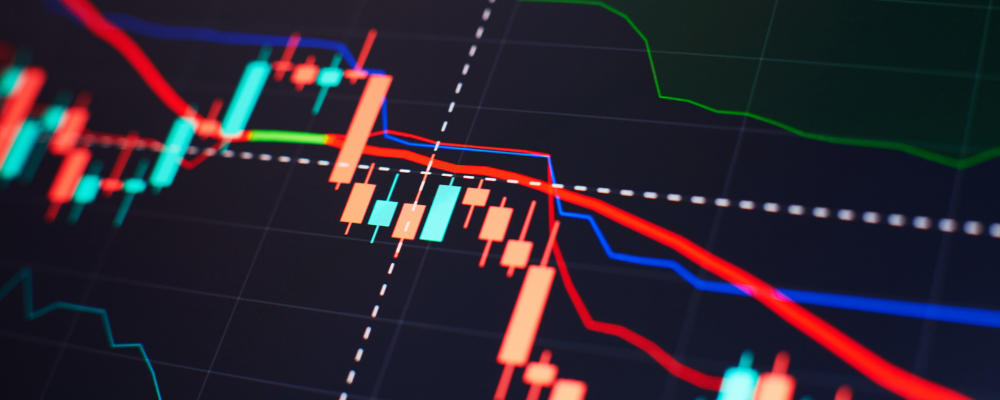The only 3 momentum indicators CFD traders need (with real examples)

Momentum indicators are essential tools for CFD traders looking to capitalize on trends, spot reversals, and time their entries and exits effectively. But with so many indicators out there, which ones deliver results?
In this article, we’ll break down the top 3 momentum indicators that professional traders rely on – complete with real-world examples to show how they work in live markets.
Relative Strength Index (RSI) in CFD trading

What it does:
The RSI measures the speed and change of price movements, oscillating between 0 and 100. Traditionally:
- Above 70 = Overbought (Potential reversal or pullback)
- Below 30 = Oversold (Potential bounce or trend reversal)
Why it works for CFDs:
CFDs (Contracts for Difference) often follow strong trends, and RSI helps traders avoid chasing overextended moves. It’s especially useful in ranging markets where price tends to revert to the mean.
Example: trading GBP/USD with RSI
- Scenario: GBP/USD rallies sharply, pushing RSI above 75.
- Action: Instead of blindly buying, a trader waits for RSI to drop below 70 before considering a short position, anticipating a pullback.
- Result: The pair retraces, validating the overbought signal.
Pro tip: Use RSI divergence (when price makes a higher high but RSI makes a lower high) to spot potential trend reversals early.
Moving Average Convergence Divergence (MACD) in CFD trading

What it does:
1. MACD line (12 EMA – 26 EMA)
- This is the core of the MACD indicator.
- It calculates the difference between two Exponential Moving Averages (EMAs):
- 12-period EMA (faster-moving average)
- 26-period EMA (slower-moving average)
-
Interpretation:
- When the MACD line is above zero, the short-term trend is stronger than the long-term trend (bullish).
- When it’s below zero, the short-term trend is weaker (bearish).
➡ How to use Moving Averages in CFD trading: strategies with XTB, Plus500, XM, AvaTrade, and Exness
2. Signal line (9 EMA of the MACD line)
- This is a smoothed version of the MACD line.
- It’s simply a 9-period EMA of the MACD line itself.
- Interpretation:
- Acts as a trigger line – when the MACD line crosses above the signal line, it’s a buy signal.
- When it crosses below, it’s a sell signal.
3. Histogram (Difference Between MACD and Signal line)
- The histogram visually represents the gap between the MACD line and the signal line.
- Interpretation:
- Positive bars (above zero) = MACD line is above the signal line (bullish momentum).
- Negative bars (below zero) = MACD line is below the signal line (bearish momentum).
- Expanding bars = Momentum is strengthening.
- Shrinking bars = Momentum is weakening (possible reversal).
It helps identify trend direction, momentum, and potential reversals.
Why it works for CFDs:
CFDs thrive on momentum, and MACD’s crossover signals help traders ride trends while avoiding false breakouts.
Example: trading gold (XAU/USD) with MACD
- Scenario: Gold is in an uptrend, and the MACD line crosses above the signal line.
- Action: A trader goes long, riding the bullish momentum.
- Exit Signal: When the MACD line crosses below the signal line, the trader exits or tightens stops.
- Result: The trader captures a strong uptrend before momentum fades.
Pro tip: Combine MACD with a trend filter (like a 200 EMA) to avoid trading against the dominant trend.
Stochastic Oscillator in CFD trading

What it does:
Similar to RSI, the Stochastic Oscillator identifies overbought/oversold conditions but uses a different formula (comparing closing prices to a recent price range).
- Above 80 = Overbought
- Below 20 = Oversold
Why it works for CFDs:
Stochastic is excellent for short-term reversals and works well in ranging or choppy markets where CFDs frequently retrace.
Example: trading Nasdaq 100 (US100) with Stochastic
- Scenario: US100 drops sharply, pushing Stochastic below 20.
- Action: A trader looks for a bullish reversal candle (e.g., hammer) and enters long.
- Result: The index bounces, rewarding the trader who bought at oversold levels.
Pro tip: Use Stochastic in conjunction with trendlines – only take oversold buys in an uptrend and overbought sells in a downtrend.
Final thoughts: how to use these indicators effectively

While these momentum indicators are powerful, they work best when combined with:
✅ Price action confirmation (e.g., support/resistance breaks)
✅ Trend analysis (e.g., higher highs/lows for uptrends)
✅ Risk management (always use stop-loss orders!)
Which one should you use?
- For trend confirmation: MACD
- For overbought/oversold levels: RSI or Stochastic
- For divergence signals: RSI
By mastering these three indicators, CFD traders can significantly improve their ability to spot high-probability trades and avoid false signals.
Top 5 FX and CFD brokers to start trading
Now that you know the best momentum indicators for CFD trading, the next step is choosing a reliable broker. The right platform can make a huge difference in execution speed, trading costs, and overall experience.
Here are the top 5 FX and CFD brokers (selected from the most trusted names in the industry) to help you get started:
BlackBull Markets
✅ Best for: Low spreads, fast execution, and ECN trading
💰 Min. deposit: $200
📊 Platforms: MetaTrader 4, MetaTrader 5, TradingView
🔹 Key features:
- Tight spreads (from 0.0 pips on ECN accounts)
- No dealing desk execution
- Great for scalping and high-frequency trading
- Regulated by FMA (New Zealand)
Ideal for: Professional traders who need deep liquidity and fast order execution.
XTB
✅ Best for: Beginner-friendly trading with advanced tools
💰 Min. deposit: $0 (for demo), $250 (for real account)
📊 Platforms: xStation 5 (award-winning platform)
🔹 Key features:
- Commission-free stock and ETF CFDs
- Free premium educational resources
- Negative balance protection
- Regulated by FCA (UK), CySEC, and KNF
Ideal for: Traders who want a smooth, intuitive platform with strong research tools.
eToro
✅ Best for: Social trading and copy trading
💰 Min. deposit: $50 (varies by region)
📊 Platforms: eToro’s proprietary platform
🔹 Key features:
- Copy successful traders automatically
- Wide range of assets (stocks, crypto, ETFs, CFDs)
- User-friendly for beginners
- Regulated by CySEC, FCA, and ASIC
Ideal for: New traders who want to learn from others or automate their strategies.
Risk disclaimer: eToro is a multi-asset platform which offers both investing in stocks and cryptoassets, as well as trading CFDs.
CFDs are complex instruments and come with a high risk of losing money rapidly due to leverage. 61% of retail investor accounts lose money when trading CFDs with this provider. You should consider whether you understand how CFDs work, and whether you can afford to take the high risk of losing your money.
This communication is intended for information and educational purposes only and should not be considered investment advice or investment recommendation. Past performance is not an indication of future results.
Copy Trading does not amount to investment advice. The value of your investments may go up or down. Your capital is at risk.
Don’t invest unless you’re prepared to lose all the money you invest. This is a high-risk investment and you should not expect to be protected if something goes wrong. Take 2 mins to learn more.
eToro USA LLC does not offer CFDs and makes no representation and assumes no liability as to the accuracy or completeness of the content of this publication, which has been prepared by our partner utilizing publicly available non-entity specific information about eToro.
AvaTrade
✅ Best for: Automated trading & diverse asset selection
💰 Min. deposit: $100
📊 Platforms: MetaTrader 4/5, AvaTradeGO, DupliTrade
🔹 Key features:
- Supports algorithmic trading (Expert Advisors)
- Fixed and floating spreads available
- Strong regulatory oversight (ASIC, FSCA, CySEC)
- Offers Islamic (swap-free) accounts
Ideal for: Traders who use robots or prefer automated strategies.
Plus500
✅ Best for: Simple CFD trading with no commissions
💰 Min. deposit: $100 (varies by region)
📊 Platforms: Plus500 WebTrader & Mobile App
🔹 Key features:
- No commissions (only spreads)
- Free demo account with virtual funds
- User-friendly interface
- Regulated by FCA, ASIC, and CySEC
Ideal for: Casual traders who prefer a straightforward, no-frills trading experience.
82% of retail investor accounts lose money when trading CFDs with this provider. You should consider whether you can afford to take the high risk of losing your money.
Related articles:
3 momentum indicators for CFD trading - FAQ